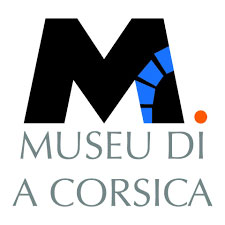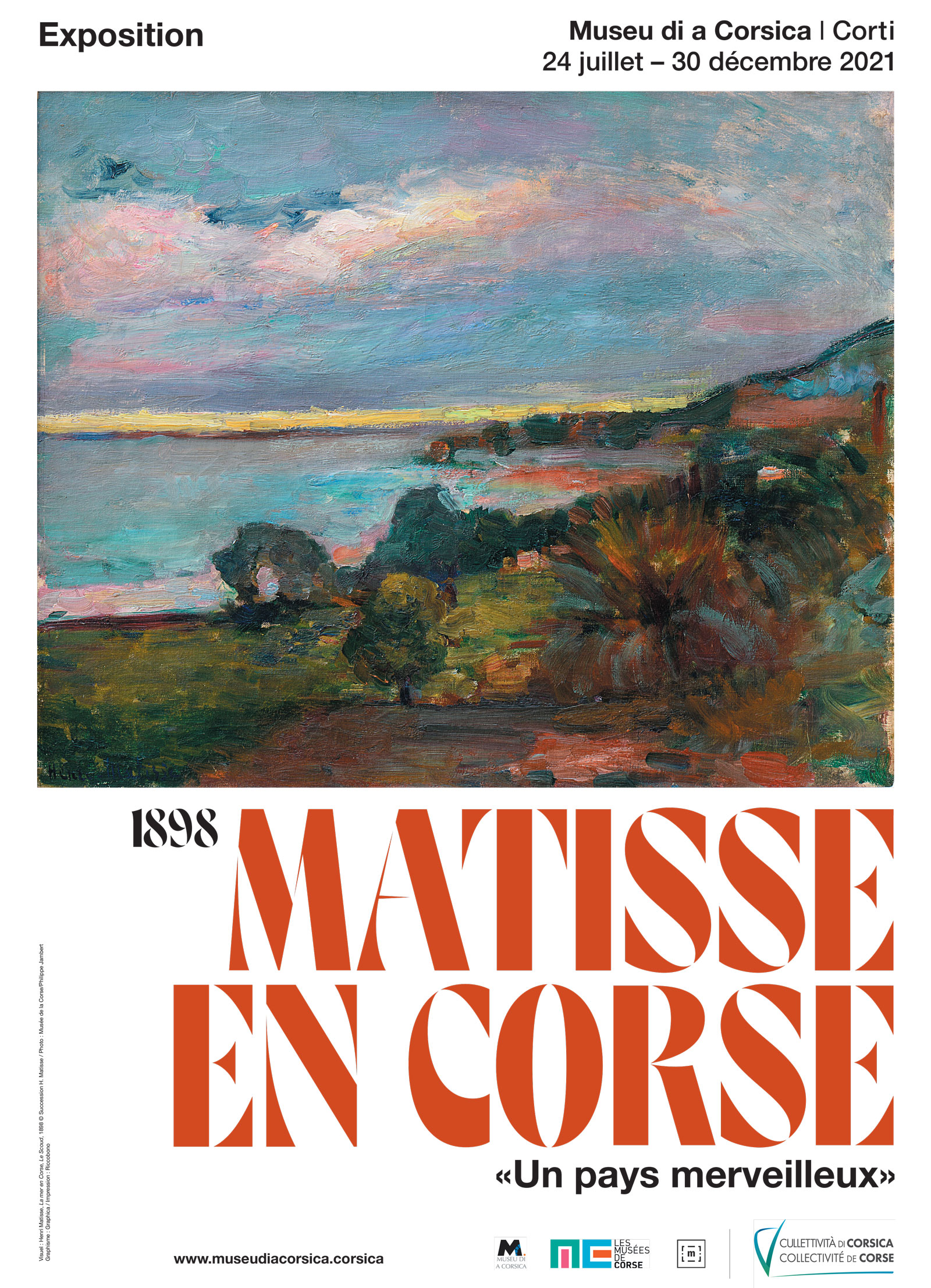Exhibition organized by the Collectivity of Corsica
The exhibition event of the summer at the Museum of Corsica in Corti has for theme the stay of Matisse in Corsica in 1898. In six months, Matisse painted fifty-five pictures, discovered the South and the Mediterranean, an unknown light and colors – in particular orange and blue.
This founding period of the artist is presented for the first time in Corsica with many works rarely shown to the public.
Sta mostra chì sarà l’avenimentu di a statina à u museu di a Corsica in Corti tratta di u sughjornu di Matisse in Corsica in u 1898. In sei mesi, Matisse, scuprendu u meziornu mediterraniu cù a so luce scunnisciuta da ellu è culori particulari – cum’è l’arancinu è u turchinu – pinghje cinquantacinque opare.
Hè a prima volta chì issu tempu fundatore di l’artistu hè prisentatu in Corsica cun parechje opare chì sò state poche l’occasione pè u publicu di vedele.
The Collectivity of Corsica has acquired, on Monday, December 2, 2019, the painting “The sea in Corsica, the Scoud” by Henri Matisse (1869-1954), dated 1898. The acquisition of this work, of great artistic and symbolic interest for Corsica, comes to fill the absence of this artist in the Corsican public collections but more globally, of modern works. The project of this exhibition was born in the continuity of this acquisition.
Curators
Dominique Szymusiak
Honorary curator of the Matisse Museum in Cateau-Cambrésis
Jacques Poncin
Honorary architect DPLG
President of the Association of the friends of Matisse in Ajaccio
Author of Matisse à Ajaccio, 1898, Lumière et couleurs révélées, Editions Alain Piazzola, 2018
Presentation of the exhibition
“It was in Ajaccio that I had my great wonderment for the South that I did not know yet. Soon came to me like a revelation, the love of materials for themselves. I felt the passion of color develop in me.
(Henri Matisse : écrits et propose sur l’art, Collection savoir, Edition Hermann, Paris, 1972, p.104).
Matisse reverses all the academic and conventional achievements for revolutionary plastic inventions.
It is during his honeymoon with his wife Amélie, that Henri Matisse, young man of 28 years discovers for the first time colors that he used until then fragmented in his palette but that he did not know in the nature. This was the case with blue, whether it was the sea or the sky: “The blue sea, blue, so blue that one would eat it”, he wrote to his friend Marquet who remained in Paris. These few months mark the changeover to a new painting style that proves revolutionary. In 1898, no artist had yet dared to venture so boldly into the freedom of overturning the classical rules.
The exhibition brings together for the first time more than a dozen of these paintings from Corsica as well as pen-and-ink drawings from several museums: the SFMoMA in San Francisco, the Pushkin Museum in Moscow, the Rosengart Foundation in Lucerne, numerous French museums (the Museum of Modern Art in Troyes, the Musée de l’Annonciade in Saint-Tropez, the Musée des Beaux-Arts in Bordeaux, the Matisse Museum in Nice, the Matisse Museum in Cateau-Cambrésis, the National Museum of Modern Art in Paris), the Pierre and Tana Matisse Foundation in New York and prestigious private collections thanks to the support of the Matisse family and the Matisse archives.
To situate this particularly important and little-known period in Matisse’s career, the exhibition begins in 1895 with the first plein-air paintings in Brittany, where he experimented with Impressionism on the sites painted by Monet on Belle-Île. The Corsican period in 1898 is privileged, developed and put in the historical context of the time.
Finally, thanks to major loans, Rue du soleil in Collioure, a watercolor from the Matisse Museum in Cateau-Cambrésis and La Moulade from a private collection, the exhibition ends with the great artistic revolution that was Fauvism in 1905.
The exhibition will be divided into four parts :
THREE SUMMERS IN BRITTANY, FROM ACADEMISM TO COLOR
CORSICA AND AJACCIO IN 1898
MATISSE PAINTS CORSICA : THE GREAT DAZZLE, FEBRUARY-JULY 1898
FROM TOULOUSE TO COLLIOURE, FROM 1898 TO 1905
The declensions of the exhibition :
- Cancelation – Daniel Buren, Les trois cabanes éclatées en Une ou La cabane Eclatée aux Trois Peaux, December 1999 / January 2000, Lille Métropole Musée d’art moderne, d’art Contemporain et d’art brut, Villeneuve d’Ascq
- Educational and interactive tour for young people (6-11 years old)
- ” Filiation “- Artistic realizations by the students of the CPES-CAAP of the High school Georges Clémenceau of Sartène




